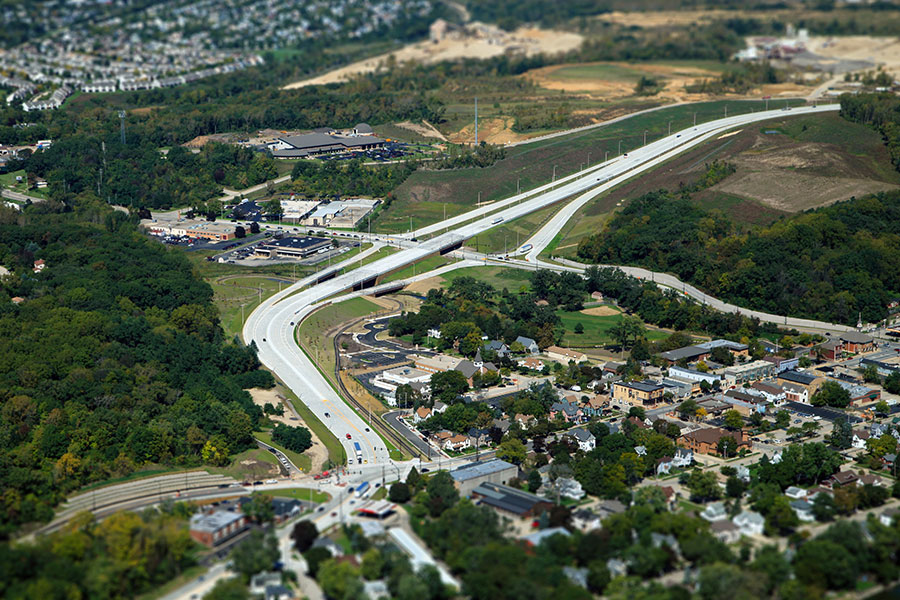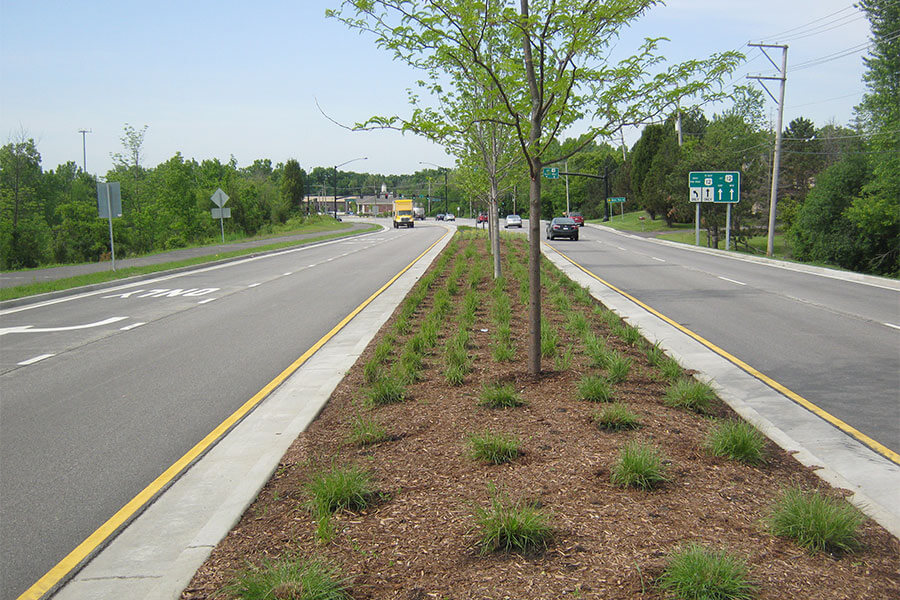The Illinois Tollway on the Leading Edge
At the 2019 Transportation Research Board Annual Meeting, a presentation on Building Information Modeling trends in transportation engineering highlighted the Illinois Tollway as an industry leader in 3D project deliverables. The specific project featured was the Reagan Memorial Tollway (I-88) at IL Route 47 Interchange for which Civiltech provided the design engineering. The Tollway initiated the idea of a 3D deliverables pilot project to observe and analyze the process, identify challenges, and determine changes to policy or approach that may be needed to more fully implement 3D deliverables in the future.
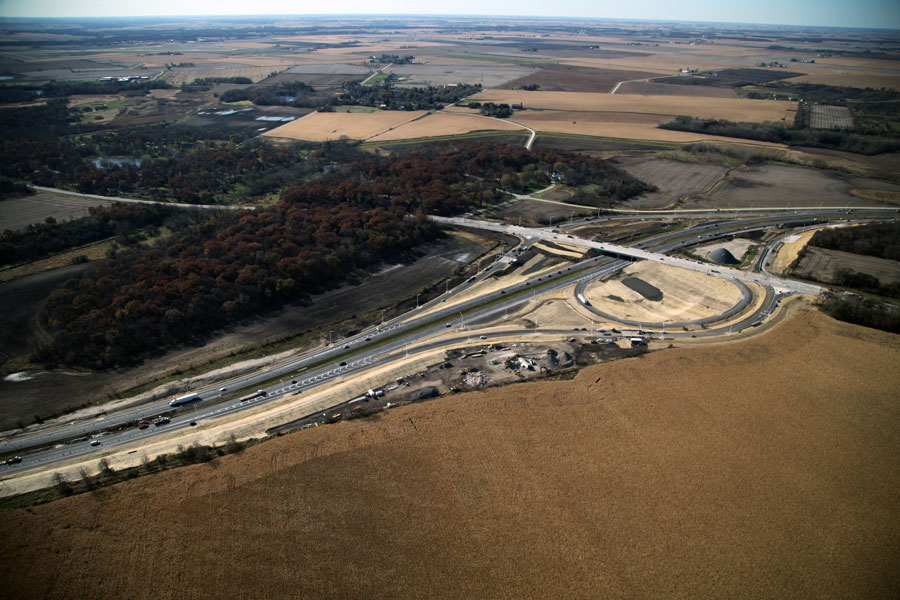
This Project Incorporates the Following:
- 3D deliverables in a pilot program
- Coordination with multiple stakeholders
- Complexities created by overlapping projects
- Tollway ramp, roadway, drainage, signage, pavement markings design
- Project management services
- Creating data for asset management
- Collaborative modeling resulting in deficiency mitigation
Scope of Services
- Highway and Tollway Design
- Preparation of Contract Plans, Specifications, and Estimates
- Highway Bridges

The Pilot Project
The scope of the pilot project included completing the I-88 and IL Route 47 Interchange design based on a recently completed Phase I study. The improvements included reconstruction of two existing ramps, construction of three new ramps, two toll plazas, reconstruction of IL Route 47 and bridge deck overlay. Civiltech’s scope of work included ramp and roadway design, as well as drainage, signage, pavement markings, project management, and overall project coordination with subconsultants and other ongoing mainline resurfacing work.
Ideal Project Parameters
The Tollway was familiar with Civiltech’s 3D modeling capabilities and chose this specific project due to certain parameters. Primarily, the project location is more isolated than many Tollway projects, so it did not have some of the complexities created by overlap with other contracts. Also, limited bridge work reduced structural engineering and maintenance of traffic requirements that would have affected the complexity of the model.
The project involved a significant amount of earthwork which also made it ideal for this initiative. A benefit of utilizing a 3D model within the contract documents is that the extent of earthwork can be closely quantified and those quantities can be verified during bidding. As the project moves into the construction phase, the model will be beneficial to the contractors involved in earth moving.
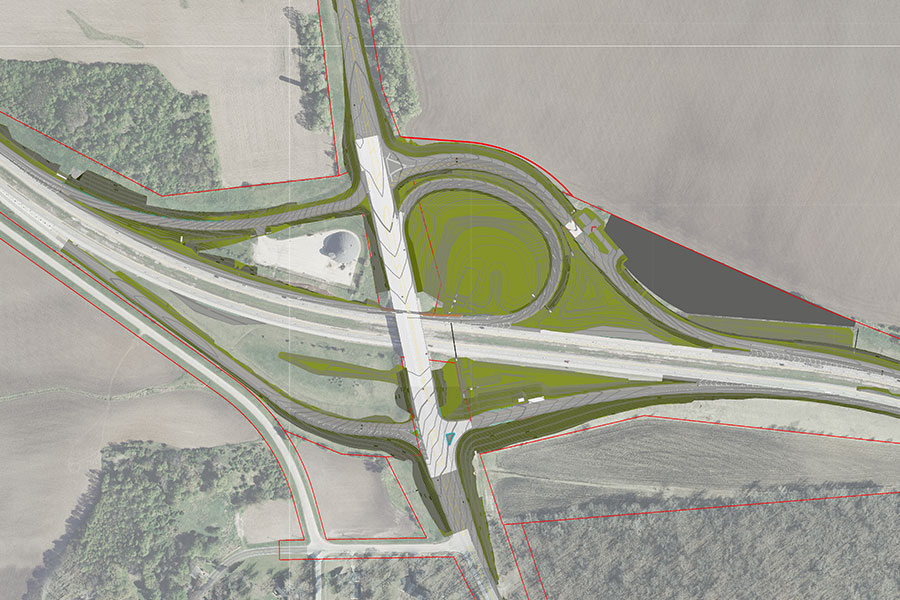
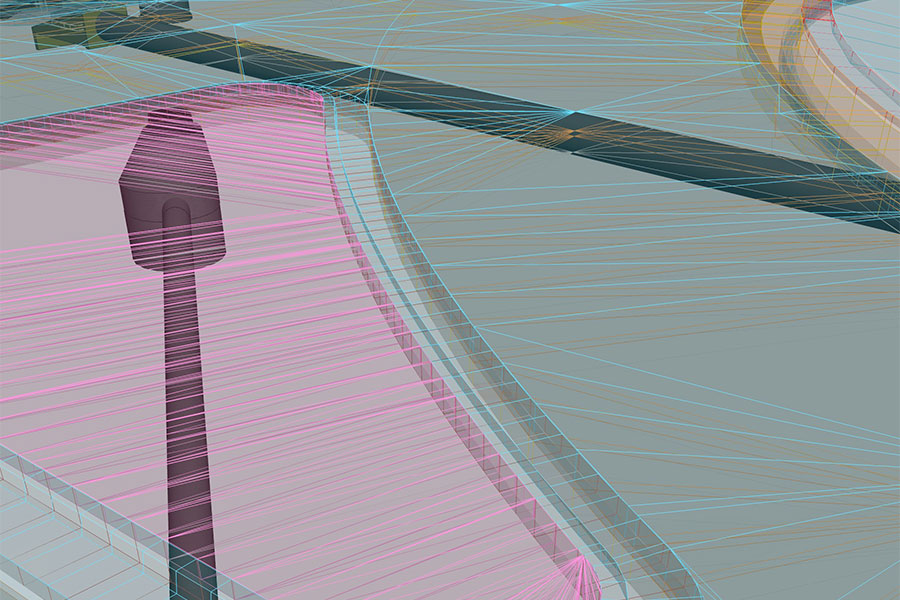
Buttoning Down Details in 3D
A design challenge that Civiltech faced was buttoning down the final project details. Three dimensional modeling in the civil engineering industry includes more complexity than the modeling involved in building design. A 3D model of a roadway reconfiguration requires aligning a multitude of different existing conditions that tie into the project. Sometimes nuances exist that are difficult to capture within a 3D model. Those nuances would normally be addressed through two dimensional details such as cross sections. With a 3D model being the final deliverable, those issues needed to be fully resolved within the model
Benefits of 3D Modeling
As Civiltech and the industry move further into the use of 3D models as contract documents, our clients and stakeholders will benefit from many potential advantages. First and foremost, the contractors can clearly understand and visualize a project’s many parameters allowing them to estimate the project more quickly and build it more accurately. The model realistically illustrates what the final product will look like and how it integrates with the existing conditions that surround it. Also, a 3D model will provide the client, construction manager, and contractors with a level of precision and detail that might normally be difficult to capture in a traditional plan set.

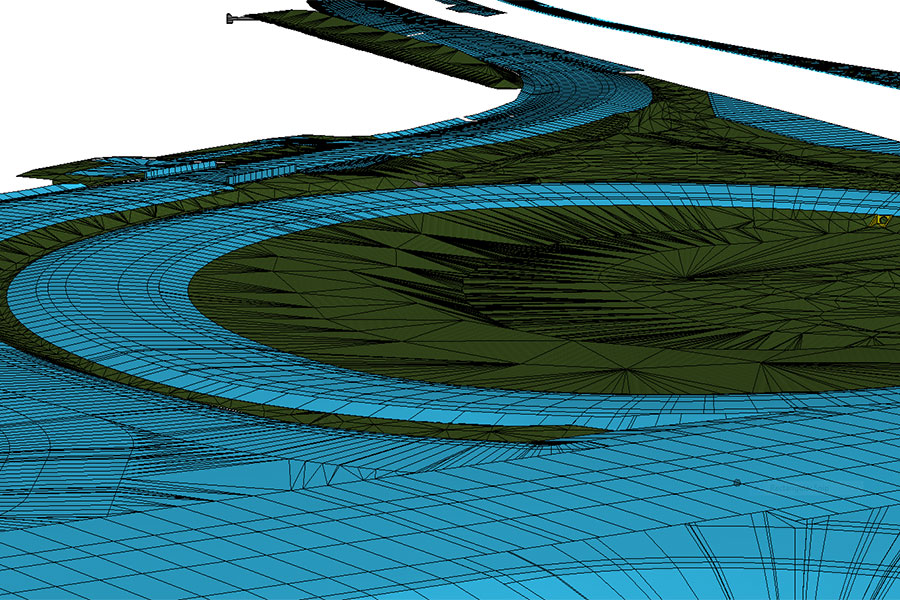
Useful Data for Asset Management
Another benefit of 3D project deliverables is that agencies will gain a significant amount of data useful to their asset management. All components of the agency’s infrastructure can be captured in an overall comprehensive model instead of stacks of plan sets. Whether needed for emergency situations or routine maintenance, accurate historical data and as-built information will be easily available.
A Collaborative Approach
During the design process, Civiltech and their subconsultants were able to simultaneously work in the model. This created a collaborative environment where the entire team was able to identify and evaluate problems as they occurred. Mitigating deficiencies during the design process helped to minimize unforeseen problems that could result in change orders during construction. The same applies to agency reviews and bidding. By being able to see all of the information in 3D, issues can be identified and remedied that may have previously not been discovered until the project was under construction.


A Successful Outcome
Both Civiltech and the Tollway consider the outcome of this phase of the project a success. However, both are looking forward to further analysis of the processes and lessons learned when construction has been completed having incorporated the 3D model into the contract documents.
Similar Projects

